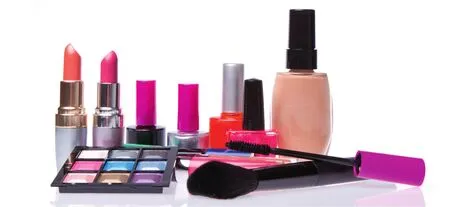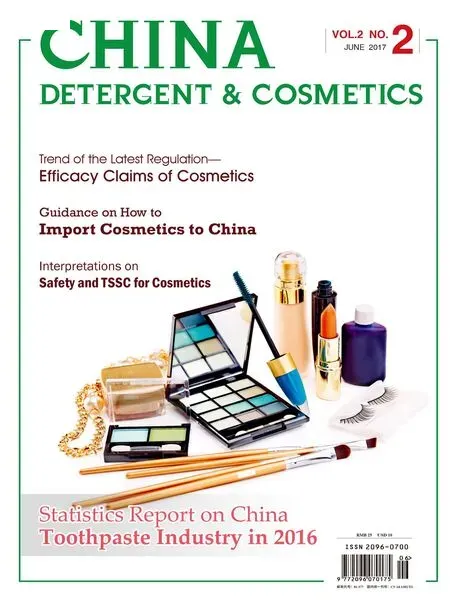Interpretations on Safety and TSSC for Cosmetics
China Information Center of Daily Chemical Industry
Q1: The TSSC has been implemented on 1 December 2016. Does it mean that the Hygienic Standard for Cosmetics (HSC) will be substituted by this new one and become invalid from then on?
A1: On 1 June 2016, CFDA promulgated an Announcement (2016 No.108) that it is prohibited to produce or import cosmetics beyond the limitation of the TSSC from 1 December 2016. Related products can be sold till the end of its shelf life.
Q2: How to interpret the cancellation of remarks in the TSSC that the asbestos shall not be detected?
A2: In the draft edition, it is interpreted that the threshold of asbestos refers to that it should not be detected by the corresponding detection method in the Appendix to the TSSC.
Q3: How to reply to the usage direction of new banned raw materials which have been used in domestic specialused cosmetics formulation according to the TSSC?
A3: It is indicated in the Notice on the Implementation of Technical Safety Standard for Cosmetics (2016 No.108) that Chinese enterprises engaged in specialused cosmetics and imported cosmetics should submit modification application forms and related documents about formulation, processing, designing & packaging and safety evaluation to CFDA when applying for changing the formulation of their products. After technical review,if the new solution is consistent with of requirements the TSSC, the approval document will be reissued and the original approval number can be retained; if the documents related to safety problem is supplemental, CFDA will notify enterprises to make it complete; otherwise, CFDA will cancel the original approval number of products. In other words, CFDA will judge that whether the solution of cosmetics formulation can meet requirements upon the TSSC, and if not, CFDA will cancel the approval number.

Q4: Whether enterprises can determine the quality control requirements including indication range and detection frequency about risk substances like methyl alcohol, dioxane and asbestos based on the productformula processing?
A4: It is based on the actual usage of raw materials that enterprises should determine the limit value,detection method and basis of the above-mentioned substances within the requirements.
Q5: If the revised name for raw materials recorded in the TSSC is inconsistent with the Inventory of Existing Cosmetic Ingredients in China, which one shall prevail when the formula is reported?
A5: Let us suspend the answer for now.
Q6: Methenamine has been removed from the list of preservatives. Identification or supplement is recommended due to its missing from Directory of Banned Materials.
A6: Methenamine can be listed in the category of antibiotics of Cosmetics Banned Components (1).
Q7: As required in Note 1, for the restricted substances in the list of non-preservatives, the name and purpose of use must be labeled on the tag. Shall it be indicated additionally though the name has been included in the list of Full Composition Table? There is also difference in word description of the use purpose in the filing system of non-special cosmetics and administrative license application system of special cosmetics.Is there any fixed format about that?
A7: It is pointed out in the Reply of the Question on Clearing the Labeling Requirements of Cosmetics (2016 No.568) on 2 August 2016, that if a substance recorded both in the Restricted Components of Cosmetics and Permitted Preservatives of Cosmetics is not used as a preservative, the functions should be indicated on the label.
Q8: Please explain the differences between Article IV and V in the Notice about Relevant Items of Cosmetics Production License (2015 No. 265). If there is no difference,it seems that Article V should be deleted.
A8: Article IV: since 1 January 2016, cosmetics enterprises with National Industrial Production License or Sanitary Certificate of Cosmetics Manufacturer may apply for the new Production License of Cosmetics in provincial food and drug administrations. The administrations will organize to review qualification of enterprises according to the requirements in the Work Specification of Production License of Cosmetics. The enterprises that meet the requirements will receive the Cosmetics Production License.
Article V: to facilitate unified management, cosmetics enterprises with Sanitary Certificate of Cosmetics Manufacturer or National Industrial Production License not expired by the end of 2016, will be also reviewed by the local FDAs.And the enterprises that meet the requirements will obtain renewed Cosmetics Production License.
Q9: Will a product that meets HSC 2007 but does not meet TSSC be allowed to produce? If not, should the product cicrulating on the market be recalled?
A9: It has been indicated in the Notice on the Implementation of TSSC (2016 No.108) that, since 1 December 2016, cosmetics that do not meet the TSSC are not allowed to produce or import, but can be sold until the end of its shelf life.
 China Detergent & Cosmetics2017年2期
China Detergent & Cosmetics2017年2期
- China Detergent & Cosmetics的其它文章
- Research Progress for Kitchen Cleaner
- Study on the Determination Conditions of Lipase Activity and the Effects of Commercial Detergent Products
- Evaluation for Whitening Efficacy of Cosmetics Containning Extract from Tricholoma Matsutake Sing
- Formation of Stable Lamellar Gel Structure Containing Pseudoceramide and Its Evaluation of Barrier Recovery Function
- Trend of the Latest Regulation—Efficacy Claims of Cosmetics
- China National Standard—Technical Specification for Safety of Soaps and Detergents(GB/T 26396-2011)
